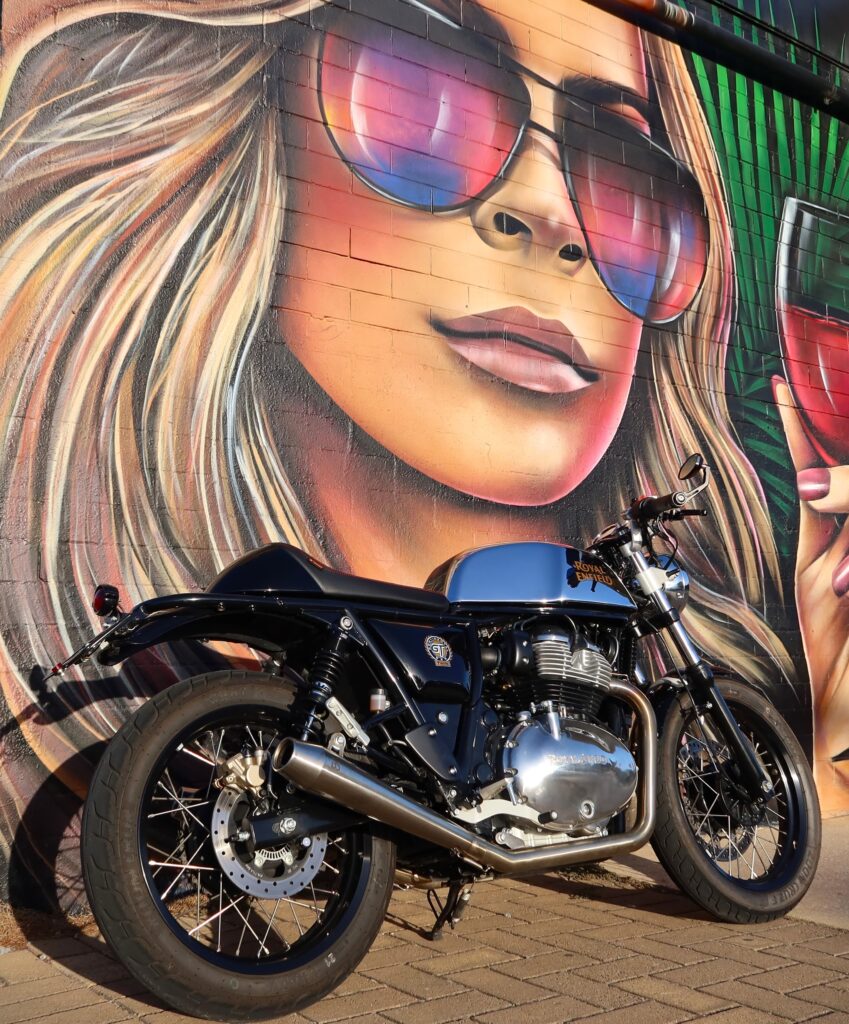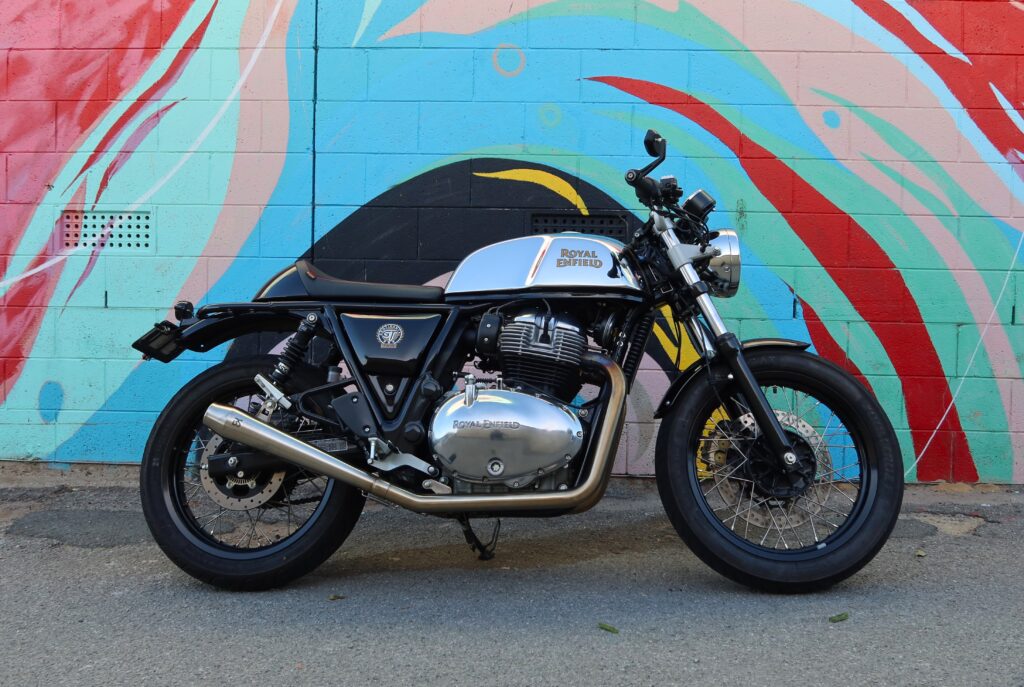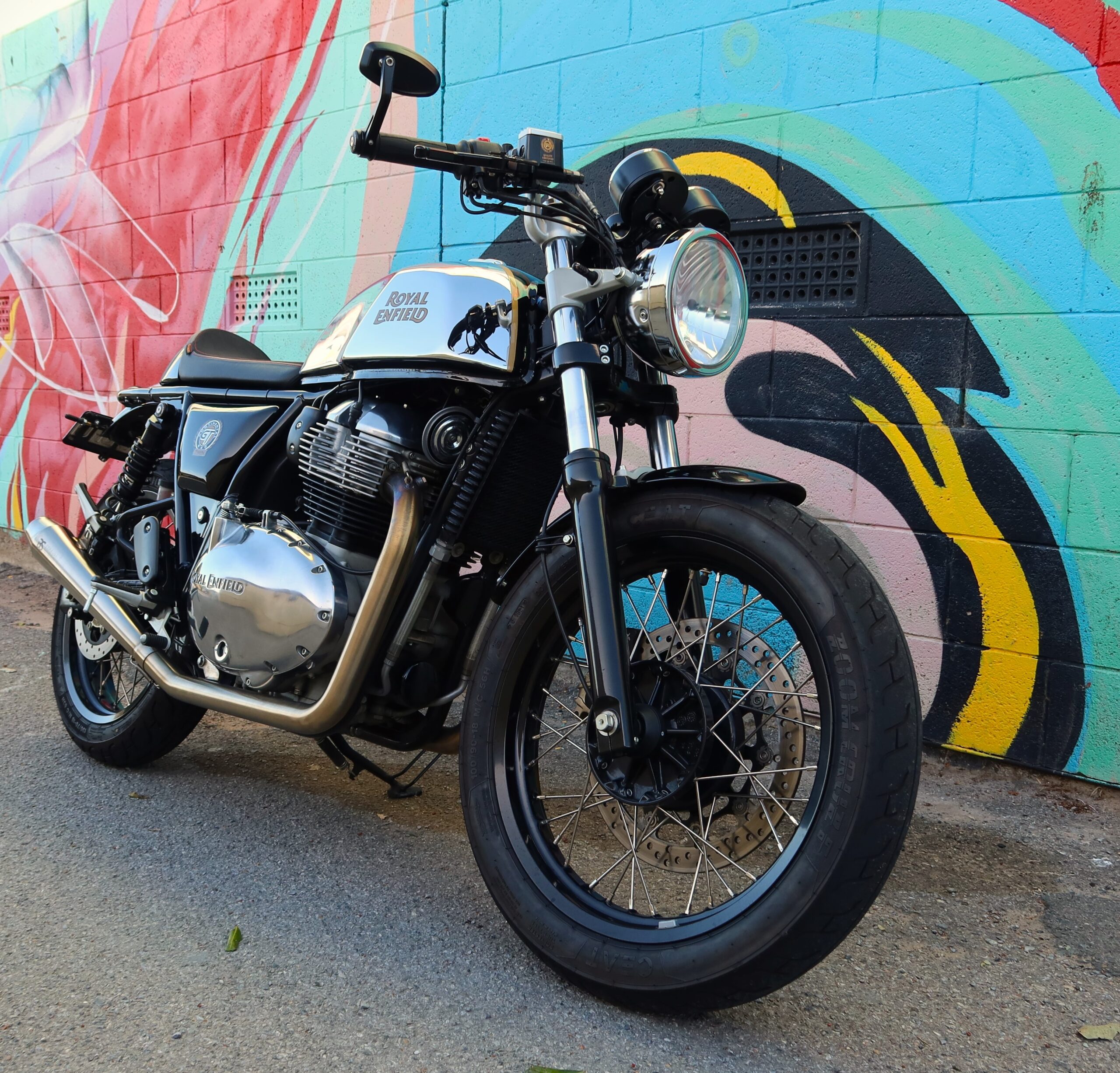In my last post I went over the goals of the 865cc conversion on my 2022 Royal Enfield Continental GT and how the project should ‘in theory’ happen.
I’m very happy to say that things went more or less exactly how they were meant to, and the bike is back on the road and through the breaking in process for the new rings and bores. How does it ride? I’ll come back to that.
Probably the biggest question that I get asked about this (aside from ‘how does it go now?’) is ‘how much did it cost’? For this specific case it’s a little hard to tell since it was some as a bit of an R&D project at work, but no matter which way you look at it, it isn’t a cheap project. The main parts alone (including the 865cc kit, performance cam, air filter, high-flow full exhaust, heavy duty clutch and Power Commander) are well north of AUD4500, and that doesn’t include the cost of boring out the barrels, pressing in the new sleeves, machining ready for the new pistons, the overall labour required to dismantle the top end of the motor, rebuild it with the new parts, wire in the Power Commander and then time on the Dyno to make the most of the new potential on offer…
And that’s just the basics of the 865 kit.
There are also extras that can be done while the engine is apart (a case of ‘its probably overkill but might as well do it while the motor is in bits) – porting the head, boring out throttle bodies, matching the intake ports to the rubber manifolds – the list can go on and on. As the old saying from Mad Max goes, ‘speed is just a question of money – how fast can you go?’

The only slightly fiddly bit turned out to be working out what to do with the oxygen sensors fitted to the stock bike. Attempting to keep these running in parallel with the Power Commander seemed an unnecessary risk in terms of conflicting messages bouncing around between the Power Commander, original (and untouched) ECU, so in the interest of simplicity the team blanked off both the sensor outlets on the headers as well as fitting sensor deletes to trick the bike into thinking everything was running normally and not throwing an engine warning message. So far, so good on that front.
The only remaining tasks now are some fine tuning on the dyno (the map installed was purchased from Hitchcocks Motorcycles in the UK, where the climate and fuel are likely to be quite different from here) and once that is done then to put on some new rubber – Bridgestone BT46 including a 140 profile rear instead of the stock 130. Within a couple of weeks this should be done, and we should have a concrete comparison between the baseline dyno run and the final product, with rubber that should provide a little more give than the CEAT originals.
YES BUT HOW DOES IT GO?
Ah yes, the big question.
Starting the bike now makes a rumble that has more volume and depth than before, noting that it already had the BS Exhaust Revolution exhaust fitted back when it was ‘just a 650’. The additional cc and performance cam really do change the sound into something that borders on intimidating, taking the already nice rumble of the 270 degree crank twin and adding a lot more bass and volume. The heavy duty clutch is as to be expected a little more work to engage, but nothing that feels onerous (at least to me). Pulling away and immediately there’s a sense that the bike is now a very different beast. Whereas before the power on tap allowed the rider to twist the throttle all the way without fear, doing this on the 865 will lift the front wheel in first. And second. I’ve not been game enough to try it in third.
The motor hasn’t lost any of the character it has in base form, but it has flattened the torque curve and brought the peak much lower – I’m going to guess that peak torque arrives somewhere between 3500 and 4000RPM, a long way off the 7500RPM redline. The beauty of the bike now is that there isn’t any real need to rev near the redline to get a serious kick in the pants happening in any gear. I rode the 865 and my 1997 Yamaha TRX850 (which is also a 270 degree crank parallel twin, and with the bore/stroke dimensions almost identical to the 865 so in theory should feel very similar – particularly given it is also ten kg lighter) in quick succession and the Royal Enfield makes the Trixie feel, well, weedie in the midrange. After having ridden inline fours for most of my life the TRX felt like a midrange monster, but the 865 is in a different league. I can see why the wizards at Revelry Racing can turn these bikes into quarter-mile rocketships in the sub-litre capacity world.
But the 865 hasn’t lost either the character or the pure riding enjoyment of the stock 650. It feels as happy plodding around the burbs at 50kmh with the engine just chugging away as it did before the upgrade – crack the throttle wide open though and all hell breaks loose…
So that’s the state of play for the moment. In the final post I’ll share the final dyno charts and do some thinking of the third question I often get – was it worth it?
Thanks again to Tom, Graham and the team at work for making it all happen. I guess I’d better hand over the keys now to let you all take it out for a ride…

